Welcome to the Lithuania Portal — Sveiki atvykę į Lietuvos Portalą
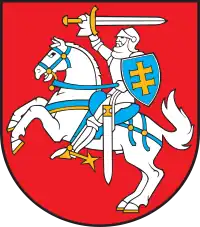
Lithuania (/ˌlɪθjuˈeɪniə/ ⓘ LITH-yoo-AYN-ee-ə; Lithuanian: Lietuva [lʲɪɛtʊˈvɐ]), officially the Republic of Lithuania (Lithuanian: Lietuvos Respublika [lʲɪɛtʊˈvoːs rʲɛsˈpʊblʲɪkɐ]), is a country in the Baltic region of Europe. It is one of three Baltic states and lies on the eastern shore of the Baltic Sea. It borders Latvia to the north, Belarus to the east and south, Poland to the south, and Russia to the southwest, with a maritime border with Sweden to the west. Lithuania covers an area of 65,300 km2 (25,200 sq mi), with a population of 2.86 million. Its capital and largest city is Vilnius; other major cities are Kaunas, Klaipėda, Šiauliai and Panevėžys. Lithuanians belong to the ethnolinguistic group of the Balts and speak Lithuanian, one of only a few living Baltic languages, and the most widely spoken.
For millennia, the southeastern shores of the Baltic Sea were inhabited by various Baltic tribes. In the 1230s, Lithuanian lands were united for the first time by Mindaugas, who formed the Kingdom of Lithuania on 6 July 1253. Subsequent expansion and consolidation resulted in the Grand Duchy of Lithuania, which by the 14th century was the largest country in Europe. In 1386, the Grand Duchy entered into a de facto personal union with the Crown of the Kingdom of Poland. The two realms were united into the bi-confederal Polish-Lithuanian Commonwealth in 1569, forming one of the largest and most prosperous states in Europe. The Commonwealth lasted more than two centuries, until neighbouring countries gradually dismantled it between 1772 and 1795, with the Russian Empire annexing most of Lithuania's territory. Towards the end of World War I, Lithuania declared Independence in 1918, founding the modern Republic of Lithuania. In World War II, Lithuania was occupied by the Soviet Union, then by Nazi Germany, before being reoccupied by the Soviets in 1944. Lithuanian armed resistance to the Soviet occupation lasted until the early 1950s. On 11 March 1990, a year before the formal dissolution of the Soviet Union, Lithuania became the first Soviet republic to break away when it proclaimed the restoration of its independence.
Lithuania is a developed country with a high income, advanced economy, ranking 35th in the Human Development Index. Lithuania is a member of the European Union, the Council of Europe, the eurozone, the Nordic Investment Bank, the Schengen Agreement, NATO, and OECD. It also participates in the Nordic-Baltic Eight (NB8) regional co-operation format. (Full article...)
Selected article -
Vilnius (/ˈvɪlniəs/ VIL-nee-əs, Lithuanian: [ˈvʲɪlʲnʲʊs] ⓘ; previously known in English as Vilna, see other names) is the capital and largest city located in Lithuania. , Vilnius's estimated population was 593,436. The Vilnius urban area extends beyond the city limits and has an estimated population of 718,507 in 2020. By November 2023, there were approximately 768,342 permanent residents in Vilnius city and Vilnius district municipalities combined.
Vilnius, in southeastern Lithuania, is the second largest city in the Baltic states (or the largest, according to the municipal statistics and the center of registers of Lithuania). It is the seat of Lithuania's national government and Vilnius District Municipality. (Full article...)General images
Did you know -

- ...national food Cepelinai is named after the Zeppelins?
 Constitution of May 3
Constitution of May 3- ...The Constitution of May 3 was the first constitution in Europe and second in the world after United States Constitution of 1788?
- ...Lithuania-born political activist Michael Oliver attempted to create a sovereign micronation Republic of Minerva?
- ... that the Communist Party of Lithuania and Belorussia organized partisan units behind the front lines during the Polish–Soviet War?
- ... that during the inaugurations of Lithuanian monarchs, Gediminas' Cap (depicted) was placed on the monarch's head by the bishop of Vilnius?
- ... that when journalist and trade unionist Nisn Pups was released from jail, the Communist Party of Lithuania instructed him to change his name?
Selected images
Topics
Military of Lithuania | ||||||||||||||
|---|---|---|---|---|---|---|---|---|---|---|---|---|---|---|
|
| Public holidays in Lithuania | |||
|---|---|---|---|
| Date | English name | Local name | Remarks |
| 1 January | New Year's Day | Naujųjų metų diena | |
| 16 February | Day of Restoration of the State of Lithuania (1918) | Lietuvos valstybės atkūrimo diena | |
| 11 March | Day of Restoration of Independence of Lithuania (1990) | Lietuvos nepriklausomybės atkūrimo diena | |
| Moveable Sunday | Easter Sunday | Šv. Velykos | Commemorates resurrection of Jesus. The first Sunday after the full moon that occurs on or soonest after 21 March. |
| The day after Easter Sunday | Easter Monday | Antroji šv. Velykų diena | |
| 1 May | International Workers' Day | Tarptautinė darbo diena | |
| First Sunday in May | Mother's Day | Motinos diena | |
| First Sunday in June | Father's Day | Tėvo diena | |
| 24 June | St. John's Day / Day of Dew | Joninės / Rasos | Celebrated according to mostly pagan traditions (Midsummer Day, Saint Jonas Day). |
| 6 July | Statehood Day | Valstybės (Lietuvos karaliaus Mindaugo karūnavimo) ir Tautiškos giesmės diena | Celebrates the 1253 coronation of Mindaugas, the first King of Lithuania, and the national anthem of Lithuania. |
| 15 August | Assumption Day | Žolinė (Švč. Mergelės Marijos ėmimo į dangų diena) | Also marked according to pagan traditions, celebrating the goddess Žemyna and noting the mid-August as the middle between summer and autumn. |
| 1 November | All Saints' Day | Visų šventųjų diena | Halloween is increasingly popular and is also informally celebrated on the eve (31 October). |
| 2 November | All Souls' Day | Mirusiųjų atminimo (Vėlinių) diena | |
| 24 December | Christmas Eve | Šv. Kūčios | |
| 25 and 26 December | Christmas Day | Šv. Kalėdos | Commemorates birth of Jesus. |
Categories
Recognized content
New articles
Rules | Match log | Results page (for watching) | Last updated: 2024-01-15 21:38 (UTC)
Note: The list display can now be customized by each user. See List display personalization for details.
- Perihan Çınar (edit | talk | history | links | watch | logs | tools) by CeeGee (talk · contribs · new pages (20)) started on 2024-01-14, score: 20
- Poland–Lithuania (disambiguation) (edit | talk | history | links | watch | logs | tools) by Shhhnotsoloud (talk · contribs · new pages (65)) started on 2024-01-14, score: 50
- List of national mapping agencies (edit | talk | history | links | watch | logs | tools) by Seandebasti (talk · contribs · new pages (1)) started on 2024-01-14, score: 30
- List of 2004 films based on actual events (edit | talk | history | links | watch | logs | tools) by LittlePuppers (talk · contribs · new pages (13)) started on 2024-01-13, score: 30
- Tema Schneiderman (edit | talk | history | links | watch | logs | tools) by Hitchken (talk · contribs · new pages (2)) started on 2024-01-13, score: 20
- Jan Sobieski's expedition against the Tatar chambuls (edit | talk | history | links | watch | logs | tools) by SebbeKg (talk · contribs · new pages (13)) started on 2024-01-10, score: 20
- Articles for the Reassurance of the Ruthenian people (edit | talk | history | links | watch | logs | tools) by Aleksandr Grigoryev (talk · contribs · new pages (16)) started on 2024-01-11, score: 40
- Kretinga Arena (edit | talk | history | links | watch | logs | tools) by Respublik (talk · contribs · new pages (8)) started on 2024-01-11, score: 60
- Mindaugas Nikoličius (edit | talk | history | links | watch | logs | tools) by Das osmnezz (talk · contribs · new pages (98)) started on 2024-01-11, score: 60
- 2005–06 Old Dominion Monarchs basketball team (edit | talk | history | links | watch | logs | tools) by Vataxevader (talk · contribs · new pages (16)) started on 2024-01-11, score: 30
- Battle of the Narew River (edit | talk | history | links | watch | logs | tools) by Olek Novy (talk · contribs · new pages (6)) started on 2024-01-10, score: 40
- Rondania fasciata (edit | talk | history | links | watch | logs | tools) by Simuliid (talk · contribs · new pages (143)) started on 2024-01-10, score: 30
- Moldavian–Polish War (edit | talk | history | links | watch | logs | tools) by SebbeKg (talk · contribs · new pages (13)) started on 2024-01-09, score: 40
- Wacław Michniewicz (edit | talk | history | links | watch | logs | tools) by Marcelus (talk · contribs · new pages (5)) started on 2024-01-10, score: 40
- John III Sobieski's trip to Tatar forces (edit | talk | history | links | watch | logs | tools) by SebbeKg (talk · contribs · new pages (13)) started on 2024-01-10, score: 20
- Mathias Oyewusi (edit | talk | history | links | watch | logs | tools) by Das osmnezz (talk · contribs · new pages (98)) started on 2024-01-10, score: 20
- List of populated places named after populated places (edit | talk | history | links | watch | logs | tools) by Marcin 303 (talk · contribs · new pages (38)) started on 2024-01-09, score: 20
- Polish-Moldavian Wars (edit | talk | history | links | watch | logs | tools) by SebbeKg (talk · contribs · new pages (13)) started on 2024-01-09, score: 40
- Karl von Werther (edit | talk | history | links | watch | logs | tools) by DACC23 (talk · contribs · new pages (52)) started on 2024-01-08, score: 30
- Selig Schachnowitz (edit | talk | history | links | watch | logs | tools) by EytanMelech (talk · contribs · new pages (41)) started on 2024-01-08, score: 30
- Battle of Lubny (edit | talk | history | links | watch | logs | tools) by Olek Novy (talk · contribs · new pages (6)) started on 2024-01-08, score: 20
- Naujoji Romuva (edit | talk | history | links | watch | logs | tools) by Egeymi (talk · contribs · new pages (24)) started on 2024-01-08, score: 100
- Trixa caerulescens (edit | talk | history | links | watch | logs | tools) by Simuliid (talk · contribs · new pages (143)) started on 2024-01-07, score: 30
- Siege of Lwów (1672) (edit | talk | history | links | watch | logs | tools) by SebbeKg (talk · contribs · new pages (13)) started on 2024-01-07, score: 20
- Stasys Nastopka (edit | talk | history | links | watch | logs | tools) by Olek Novy (talk · contribs · new pages (6)) started on 2024-01-06, score: 90
- Airhub Airlines (edit | talk | history | links | watch | logs | tools) by Njsky (talk · contribs · new pages (4)) started on 2024-01-06, score: 20
- Central committees of parties (edit | talk | history | links | watch | logs | tools) by TheUzbek (talk · contribs · new pages (18)) started on 2024-01-06, score: 20
- Jan Zamoyski's expedition to Moldavia (edit | talk | history | links | watch | logs | tools) by SebbeKg (talk · contribs · new pages (13)) started on 2024-01-05, score: 20
- Central committee of the (edit | talk | history | links | watch | logs | tools) by TheUzbek (talk · contribs · new pages (18)) started on 2024-01-06, score: 20
- Lithuania at the 2024 Winter Youth Olympics (edit | talk | history | links | watch | logs | tools) by Sportsfan 1234 (talk · contribs · new pages (73)) started on 2024-01-06, score: 60
- Rachel Kostanian (edit | talk | history | links | watch | logs | tools) by DaffodilOcean (talk · contribs · new pages (8)) started on 2024-01-06, score: 70
- Medal of 13 January (edit | talk | history | links | watch | logs | tools) by Noahtaylor5042 (talk · contribs · new pages (21)) started on 2024-01-06, score: 60
- Leib Naidus (edit | talk | history | links | watch | logs | tools) by Dan Carkner (talk · contribs · new pages (1)) started on 2024-01-05, score: 40
- 2024 UCI Europe Tour (edit | talk | history | links | watch | logs | tools) by Martijnvdam97 (talk · contribs · new pages (8)) started on 2024-01-05, score: 30
- Cineuropa (edit | talk | history | links | watch | logs | tools) by Οἶδα (talk · contribs · new pages (41)) started on 2024-01-03, score: 20
- 2019 FIBA 3x3 U23 World Cup – Men's tournament (edit | talk | history | links | watch | logs | tools) by ILoveSport2006 (talk · contribs · new pages (8)) started on 2024-01-03, score: 30
- Skycop (edit | talk | history | links | watch | logs | tools) by Generalinisd (talk · contribs · new pages (1)) started on 2024-01-03, score: 50
- Ingrida Siliūnienė (edit | talk | history | links | watch | logs | tools) by Das osmnezz (talk · contribs · new pages (98)) started on 2024-01-03, score: 40
- Archaeology by country (edit | talk | history | links | watch | logs | tools) by Joe Roe (talk · contribs · new pages (21)) started on 2024-01-03, score: 30
- Playing with Numbers (edit | talk | history | links | watch | logs | tools) by Nascar9919 (talk · contribs · new pages (7)) started on 2024-01-03, score: 30
- Friends of the Constitution (disambiguation) (edit | talk | history | links | watch | logs | tools) by Cactus Ronin (talk · contribs · new pages (1)) started on 2024-01-03, score: 20
- Joseph Petrovykh (edit | talk | history | links | watch | logs | tools) by Vanjagenije (talk · contribs · new pages (187)) started on 2024-01-02, score: 20
- Adam Borzobohaty (edit | talk | history | links | watch | logs | tools) by Wikibenchris (talk · contribs · new pages (1)) started on 2023-12-28, score: 60
- Nikolajs Mazurs (edit | talk | history | links | watch | logs | tools) by Latbasket (talk · contribs · new pages (1)) started on 2024-01-02, score: 20
- Outline of classical music (edit | talk | history | links | watch | logs | tools) by Gor1995 (talk · contribs · new pages (2)) started on 2024-01-01, score: 20
- Deaths in December 2023 (edit | talk | history | links | watch | logs | tools) by HelpingYouToKnowMore (talk · contribs · new pages (2)) started on 2024-01-01, score: 30
Associated Wikimedia
The following Wikimedia Foundation sister projects provide more on this subject:
-
 Commons
Commons
Free media repository -
 Wikibooks
Wikibooks
Free textbooks and manuals -
 Wikidata
Wikidata
Free knowledge base -
 Wikinews
Wikinews
Free-content news -
 Wikiquote
Wikiquote
Collection of quotations -
 Wikisource
Wikisource
Free-content library -
 Wikiversity
Wikiversity
Free learning tools -
 Wikivoyage
Wikivoyage
Free travel guide -
 Wiktionary
Wiktionary
Dictionary and thesaurus
Sources
-
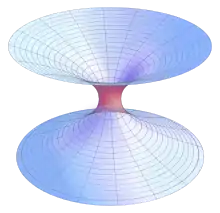 List of all portals
List of all portals -

-

-

-
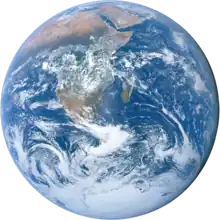
-

-

-

-

-

-
 Random portal
Random portal -
 WikiProject Portals
WikiProject Portals
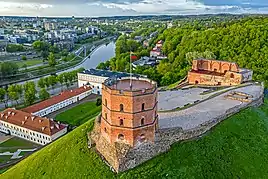
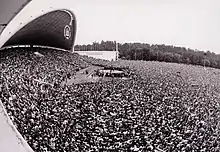

_in_1946.jpg.webp)
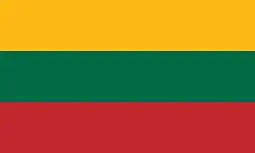

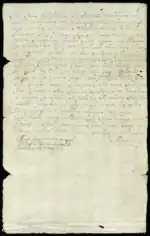




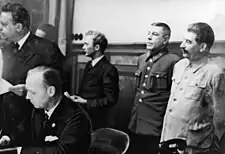
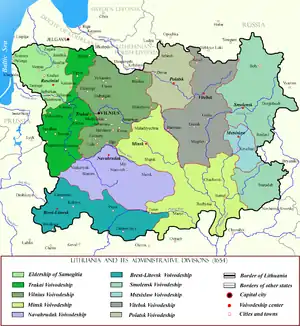
_(48099215538).jpg.webp)
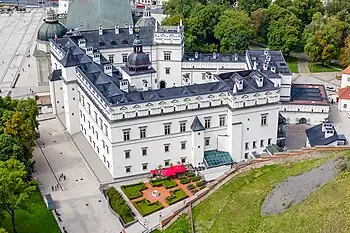
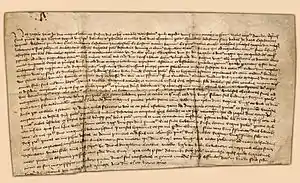
_(2).jpg.webp)


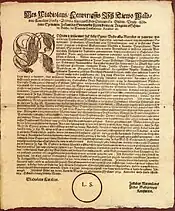

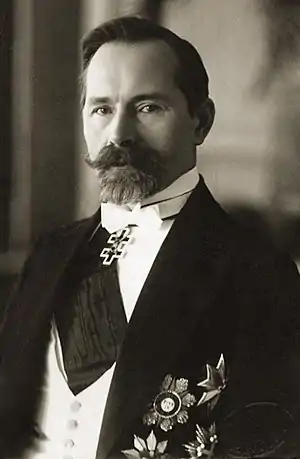
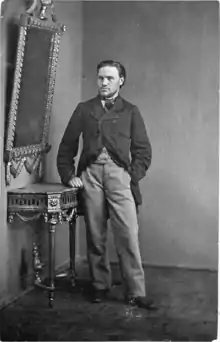


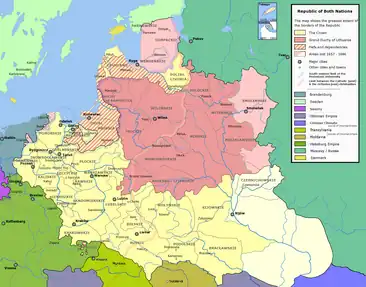

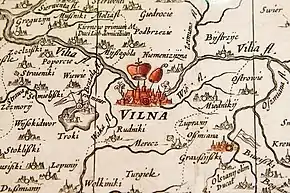


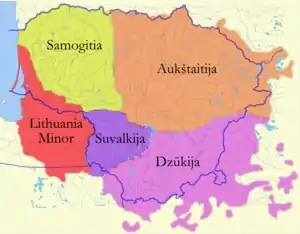
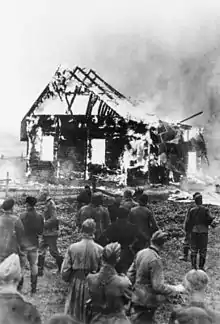

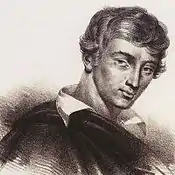

_by_Martynas_Ma%C5%BEvydas%252C_published_in_K%C3%B6nigsberg%252C_1547_(cropped).jpg.webp)
_(2).jpg.webp)

.jpg.webp)

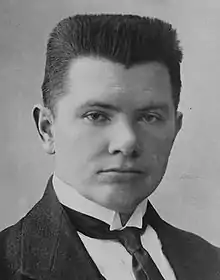





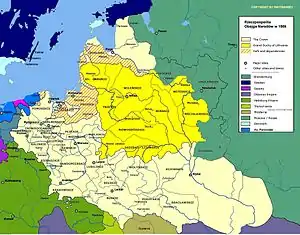

%252C_1919.jpg.webp)

![Image 55The preservation of the Great Seal of Lithuania (pictured, dating to 1623) when concluding the Union of Lublin meant that the elected monarchs acts without being confirmed with the Lithuanian seals were void in Lithuania. These Lithuanian seals were in possession of the Lithuanian Grand Chancellor (Great Seal) and Lithuanian Vice-Chancellor [lt] (Lesser Seal). (from Grand Duchy of Lithuania)](../I/The_Great_Seal_of_Lithuania_(with_Vytis)_from_the_reign_of_Sigismund_III_Vasa%252C_1623.png.webp)

.jpg.webp)

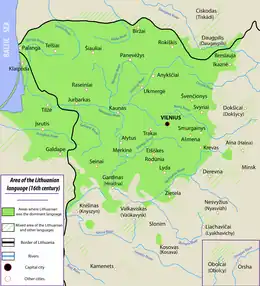

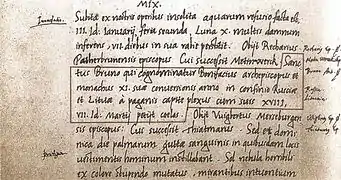
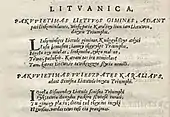
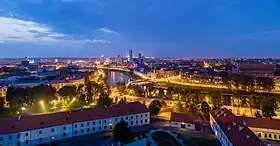
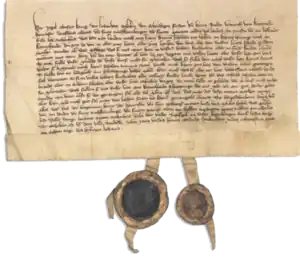





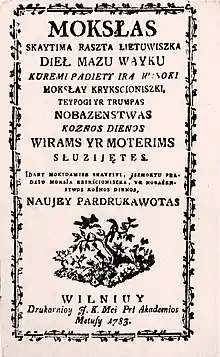
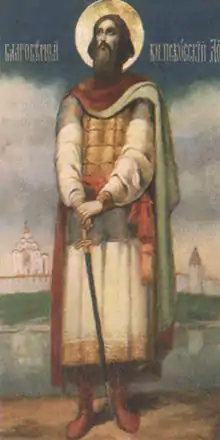
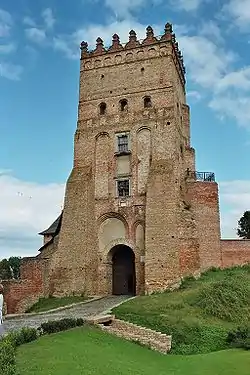


_in_1544.jpg.webp)
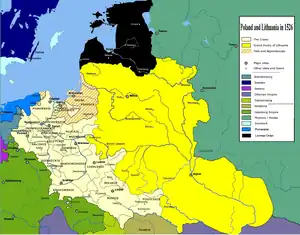
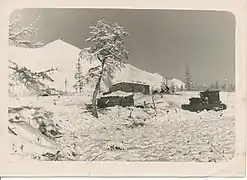

.png.webp)
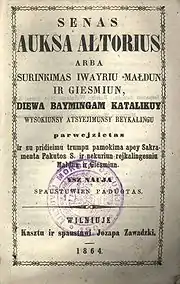
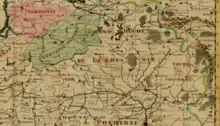
.jpg.webp)

_lead_the_disarmed_soldiers_of_the_Red_Army_during_the_June_Uprising%252C_1941.jpg.webp)
._Imitating_a_Gulistan_mint_dang_of_Jani_Beg_(Jambek)._Uncertain_Kiev_region_mint._Pseudo-Arabic_legend.jpg.webp)

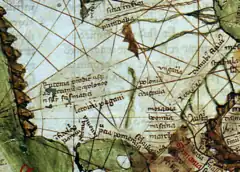
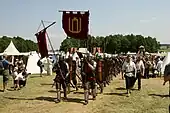
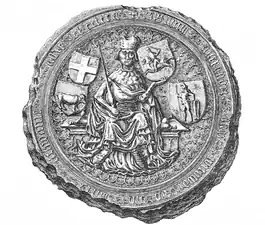

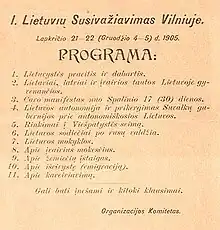
.jpg.webp)

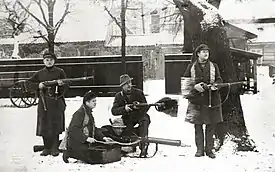
.jpg.webp)
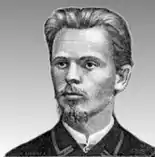

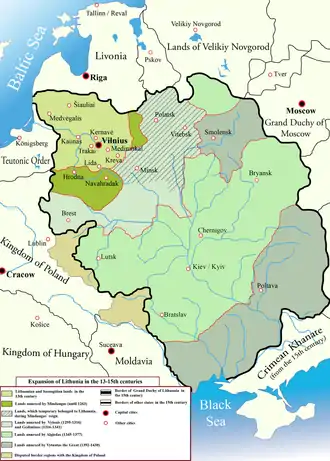


.PNG.webp)
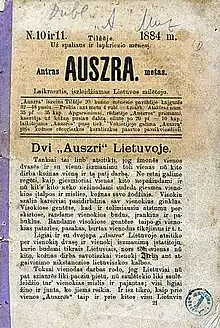
.jpg.webp)
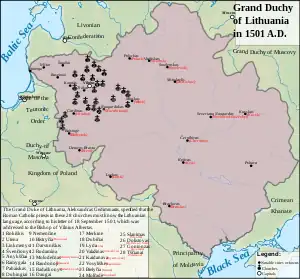


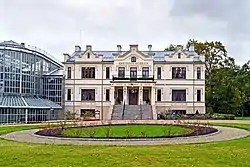




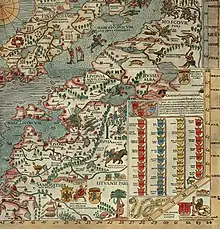


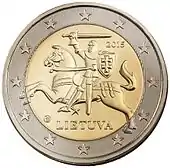
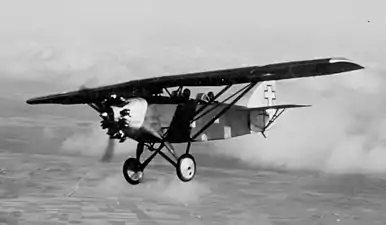



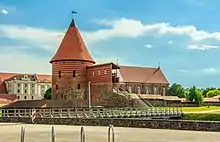
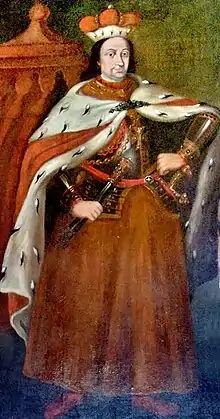
.jpg.webp)
_-_1907.jpg.webp)

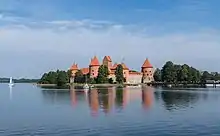


.jpg.webp)
%252C_Bitwa_pod_Orsz%C4%85.jpg.webp)
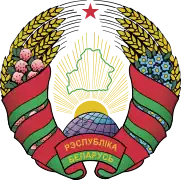

.png.webp)